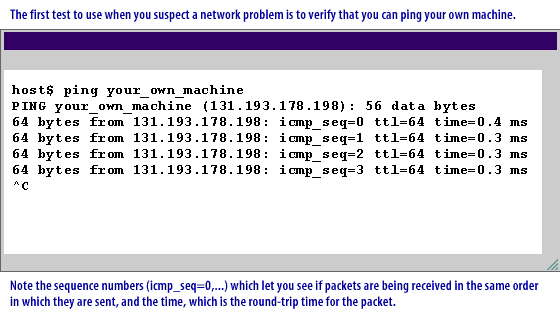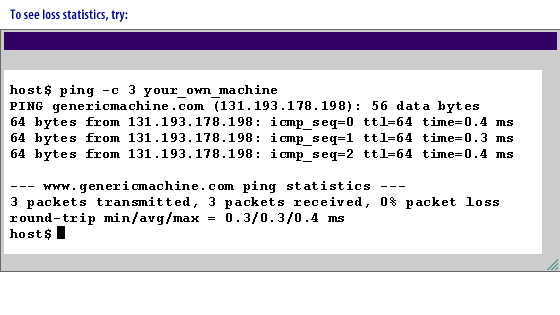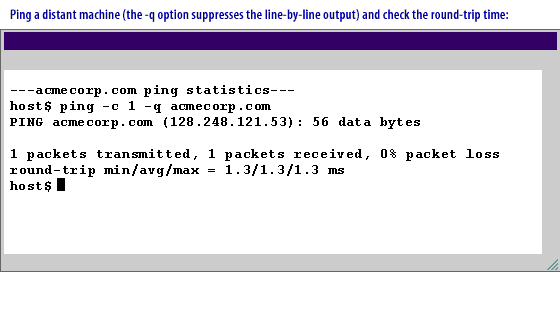Using ping
Ping is a tool commonly used to find the status of a device on a network. Ping is based on the ICMP protocol[1].
When a Ping process request is sent out as an ICMP echo to the target device, it replies with an ICMP echo reply if the device is available.
View the Images below to see how the
ping command is used to test network connectivity.
Purpose of Ping
Ping is used to send a test packet to a device to find out whether it is reachable and how long the packet takes to reach the device.
There are two important purposes.
- test the network availability to device
- network latency between two devices
TCP/IP Illustration



[1](ICMP)Internet Control Message Protocol: The Internet Control Message Protocol (ICMP) is a network layer protocol used by network devices to diagnose network communication issues. ICMP is mainly used to determine whether or not data is reaching its intended destination in a timely manner.